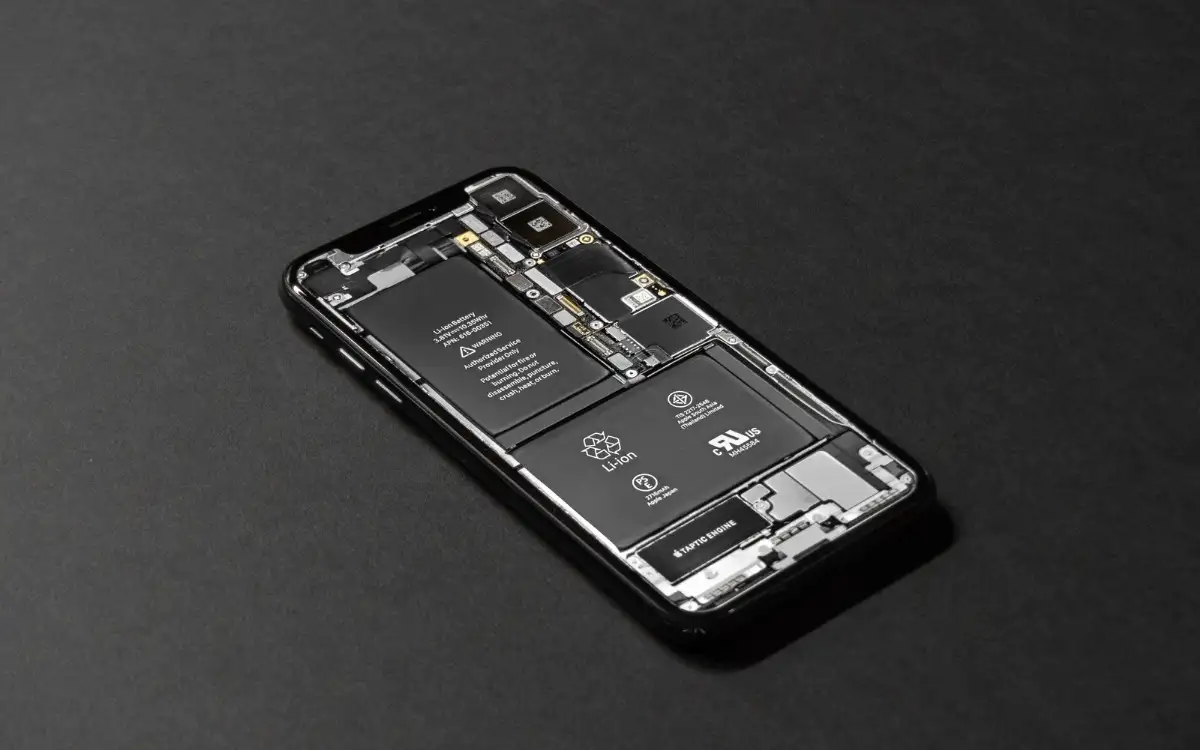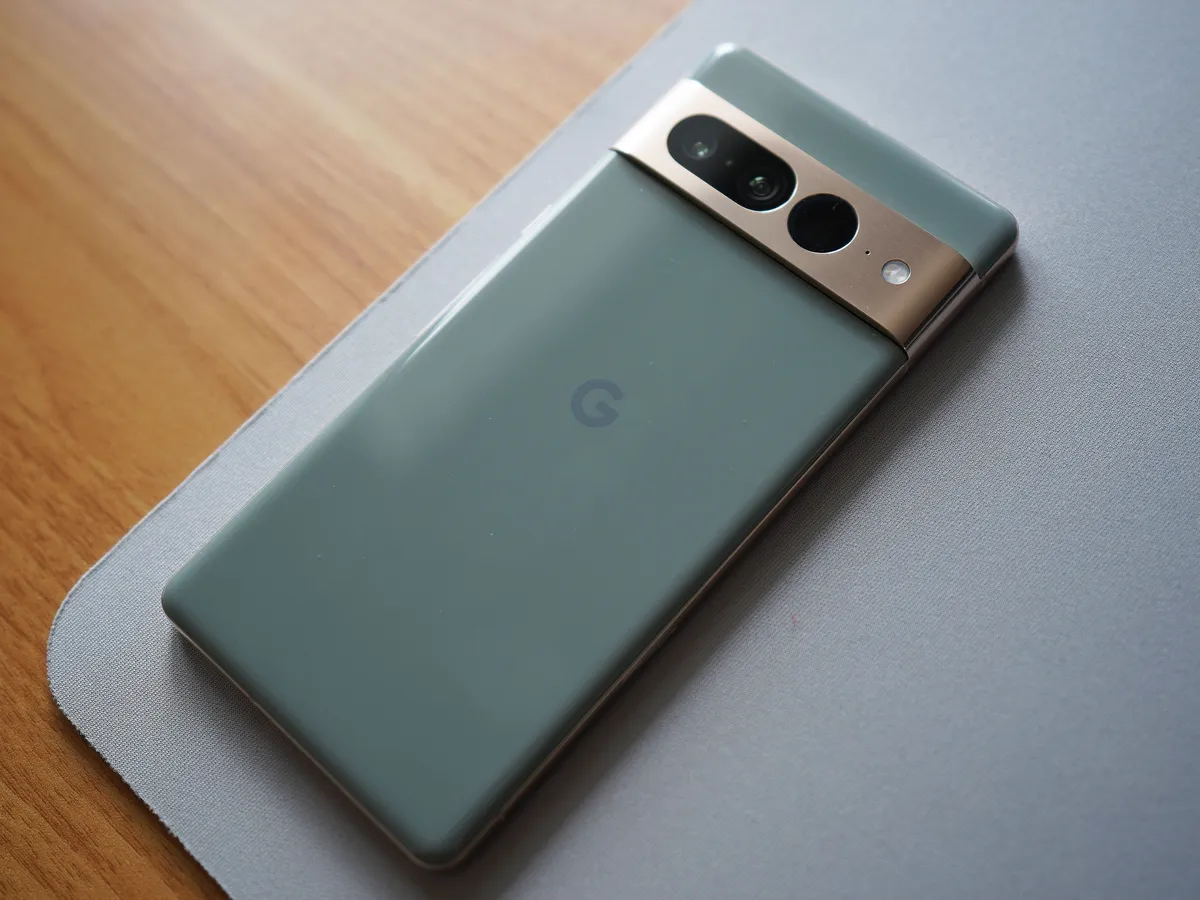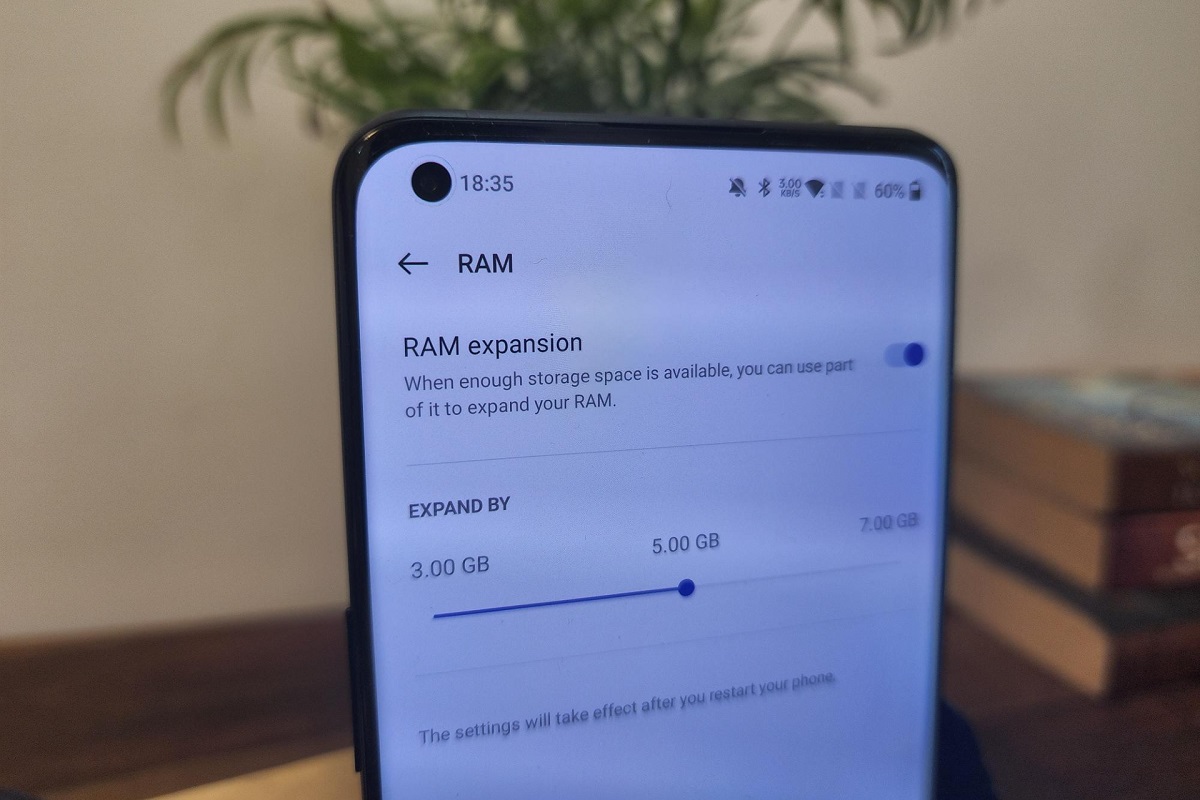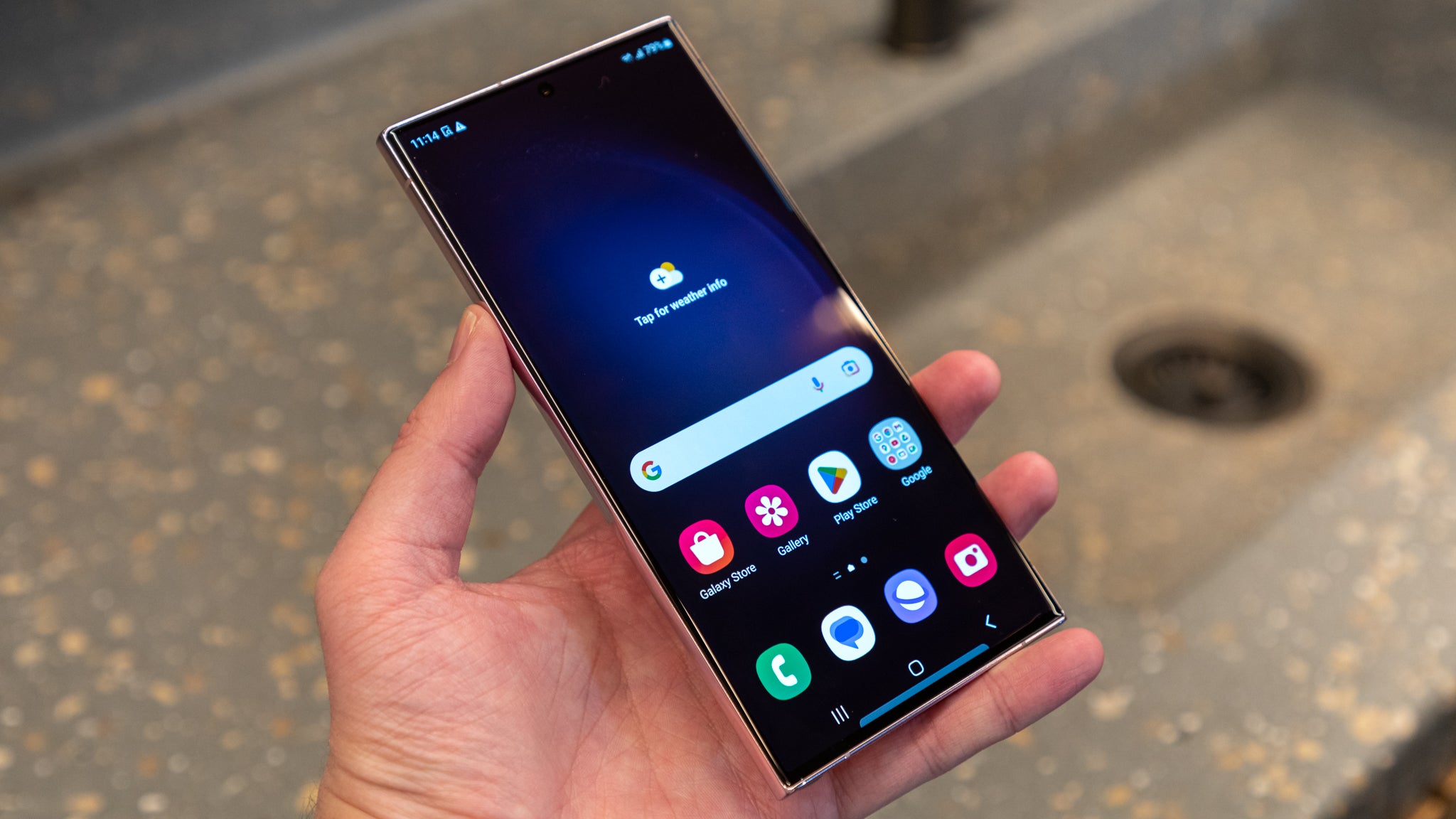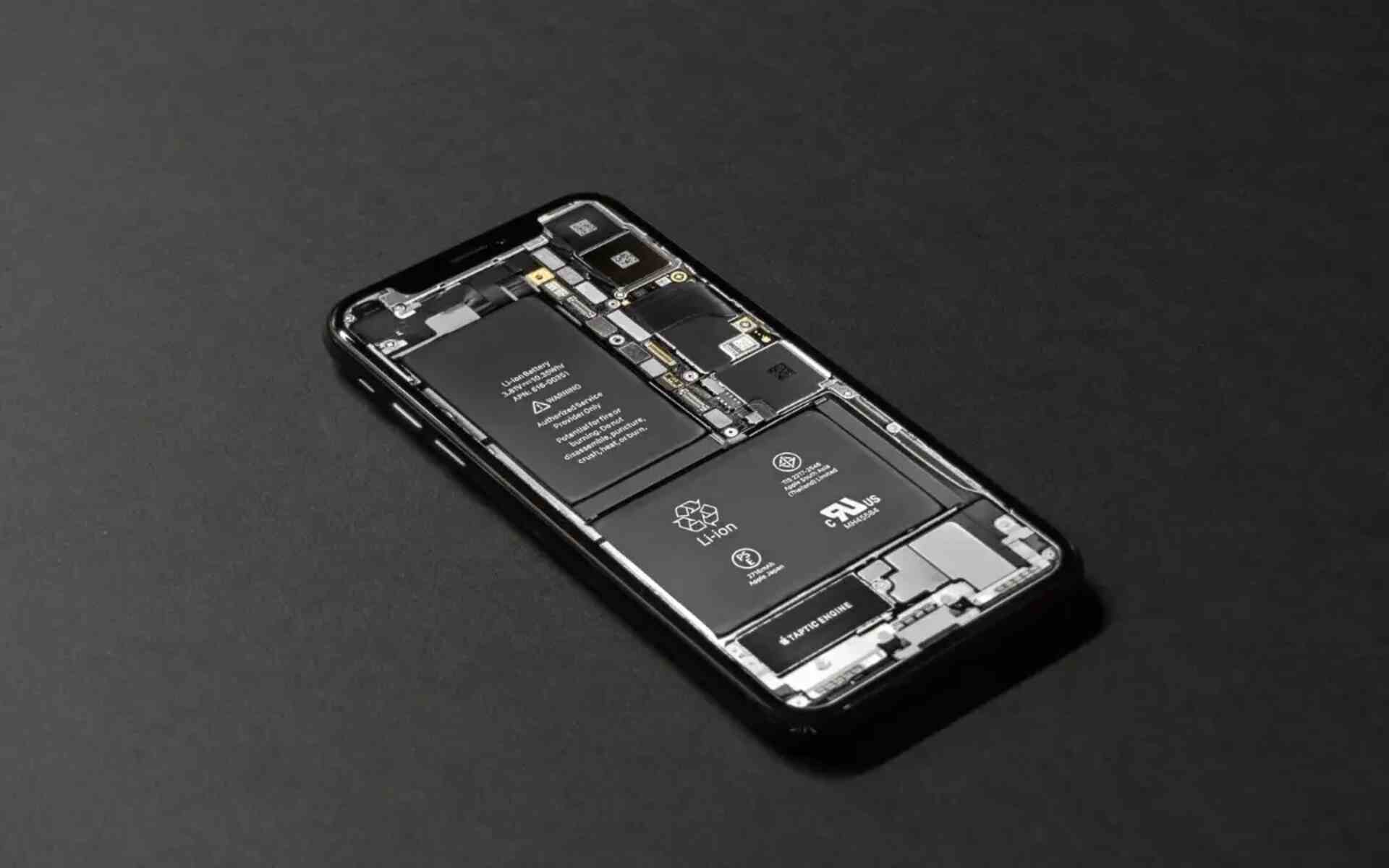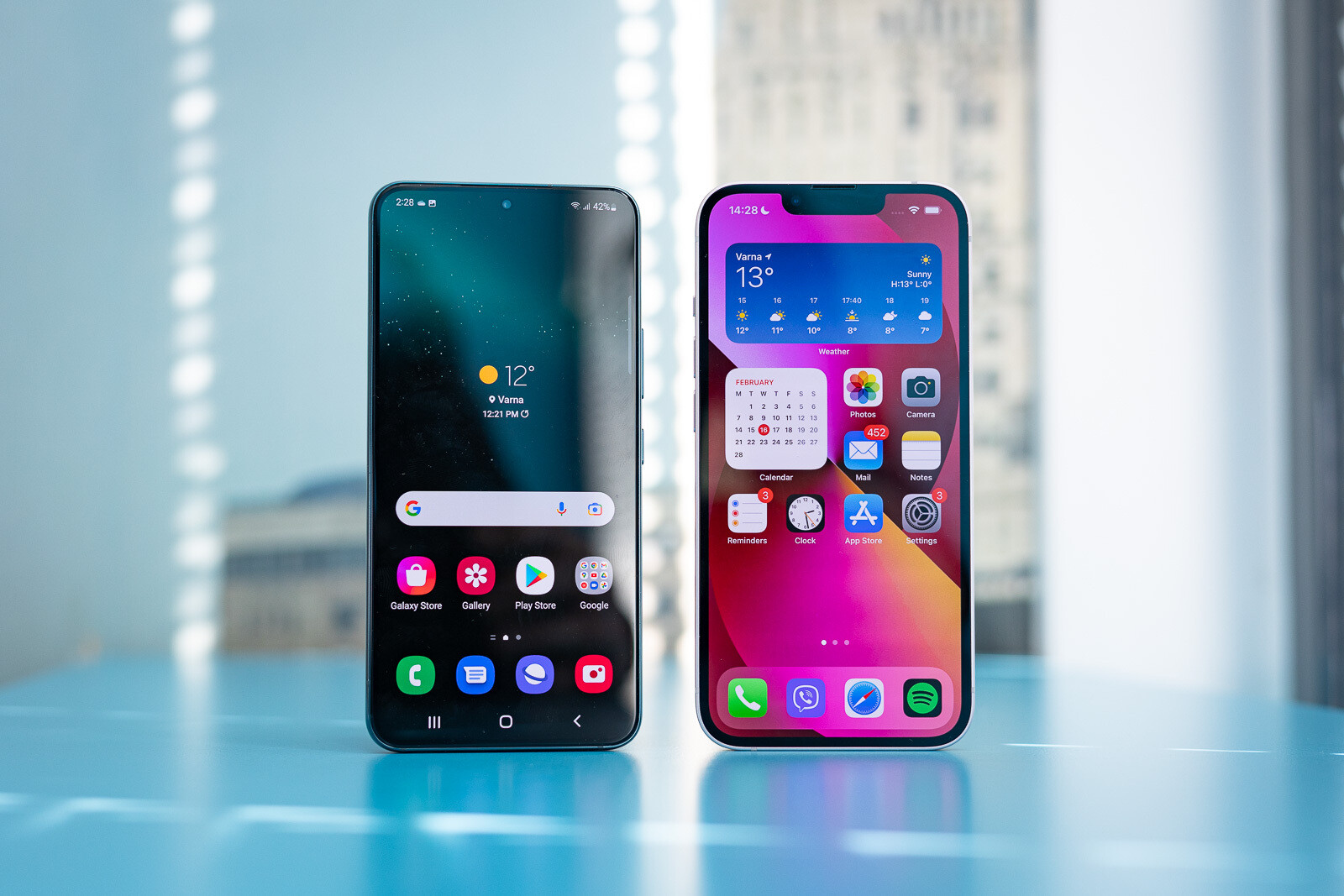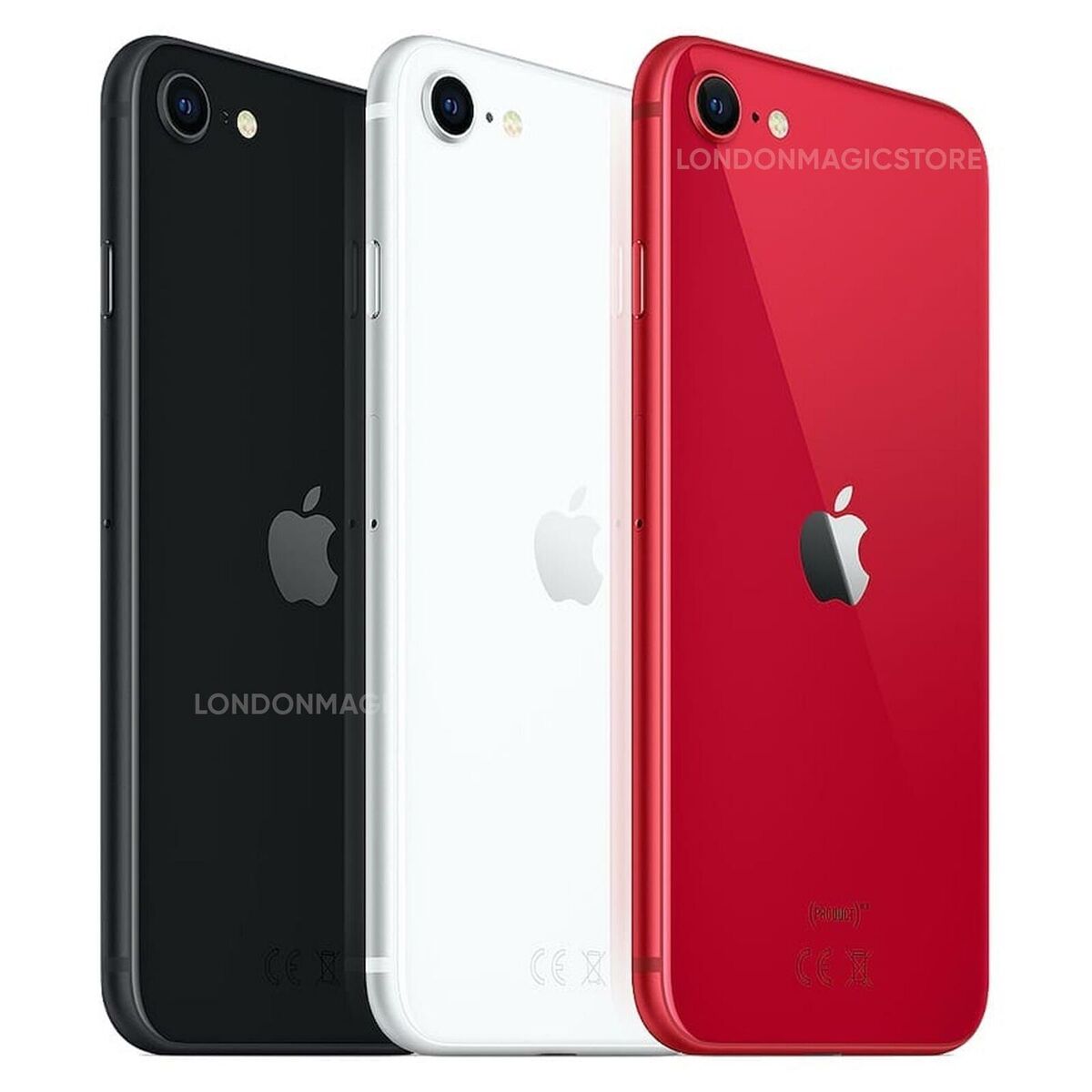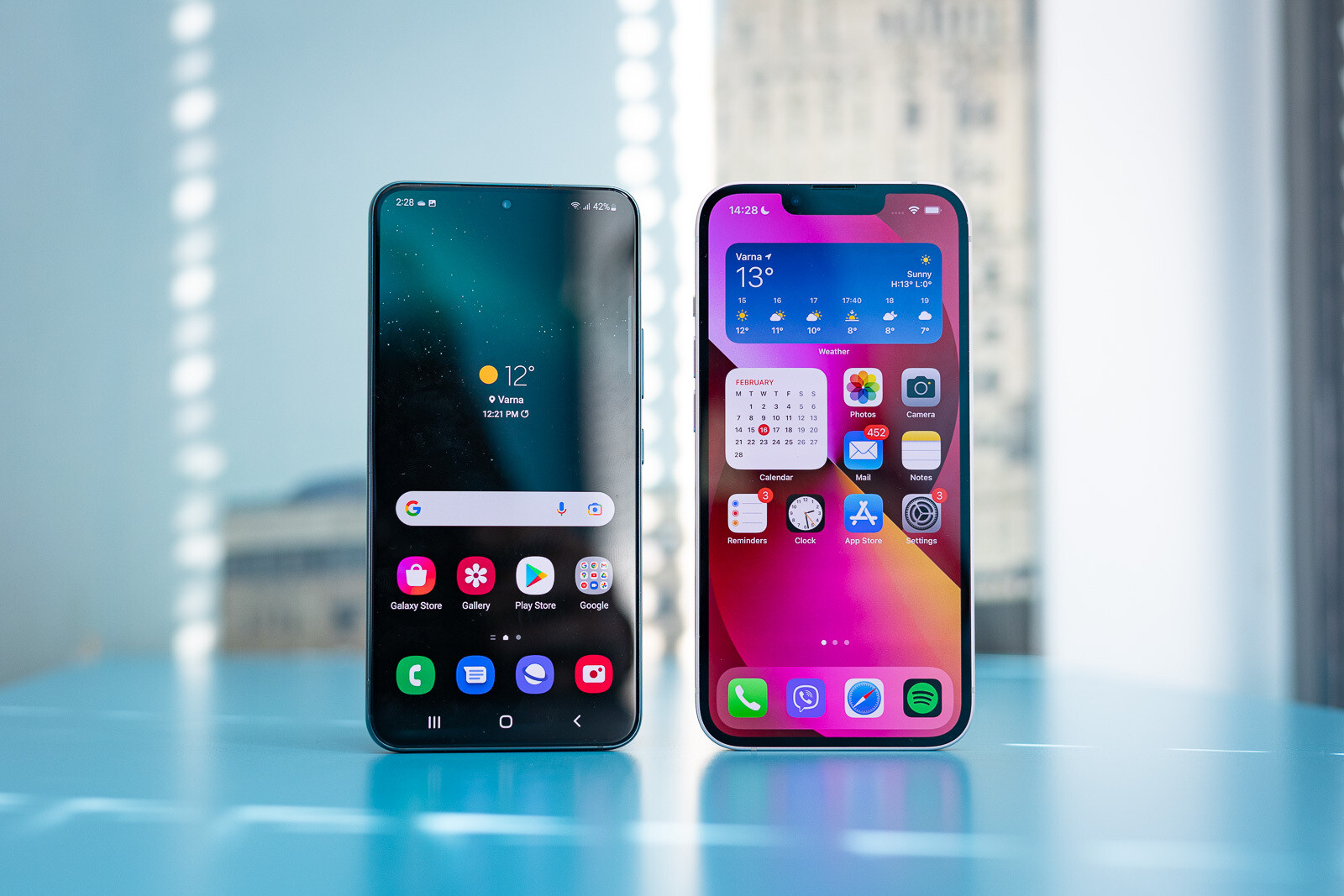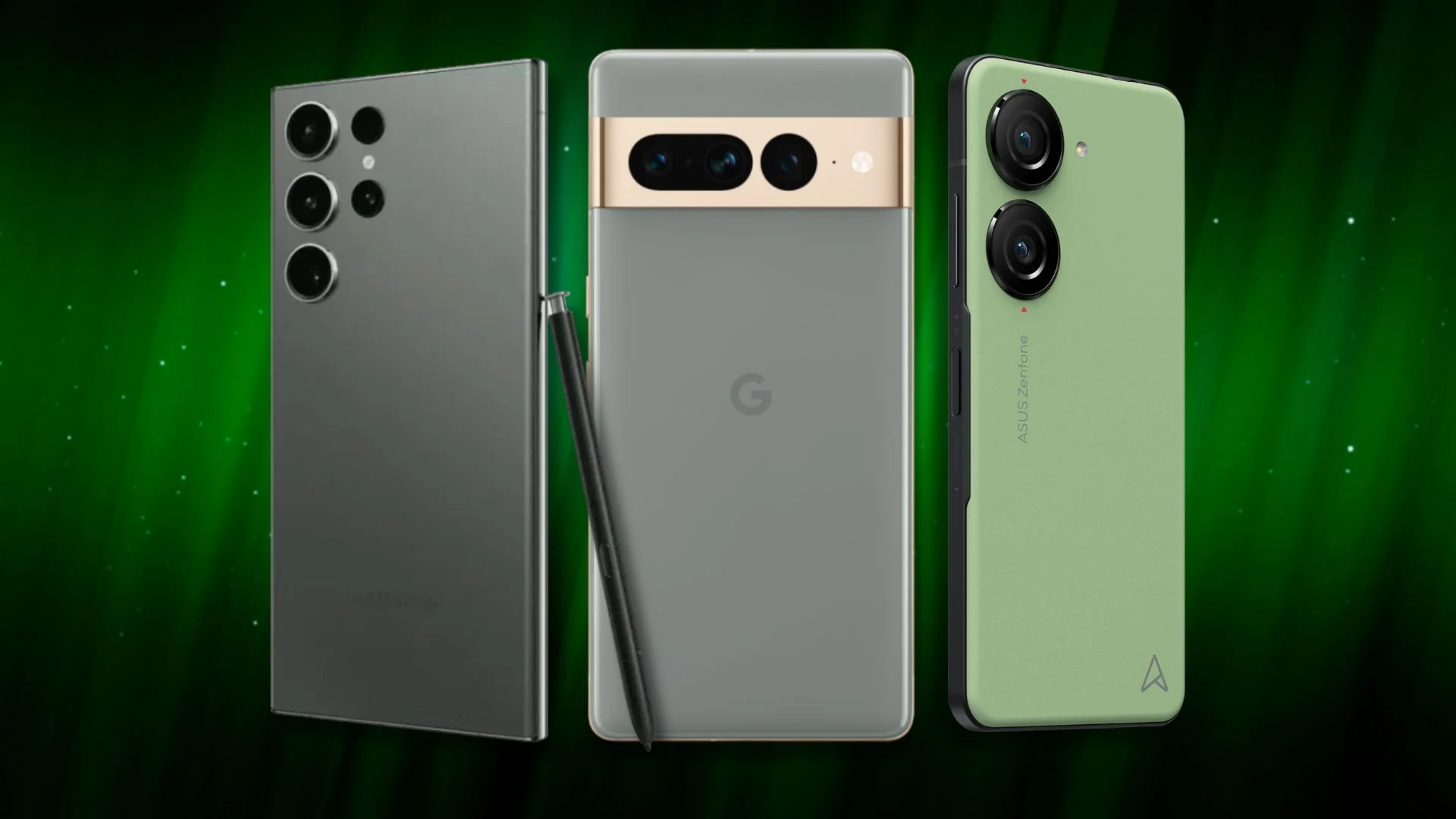Introduction
Welcome to the digital age, where cell phones have become an indispensable part of our lives. From making calls and browsing the internet to capturing memories and staying connected, cell phones have evolved into powerful devices capable of performing numerous tasks. One crucial component that determines a cell phone’s performance is its Random Access Memory (RAM). RAM plays a vital role in the smooth functioning of apps, multitasking, and overall device performance.
RAM, often referred to as short-term memory, is a type of computer data storage that temporarily holds information that the device is actively using. It is different from the long-term storage provided by the phone’s internal storage or an external memory card. When you open an app or perform a task on your cell phone, relevant data is loaded into the RAM for quick access, which allows the device to respond swiftly.
In this article, we will delve into the world of RAM in cell phones and explore the importance of having an adequate amount to meet your needs. We will discuss the factors to consider when determining how much RAM you need, the minimum requirements for common tasks, and the benefits of having more RAM. Additionally, we will explore how additional features and apps can impact RAM usage and how RAM affects multitasking and overall performance. By the end, you will have a better understanding of whether you should prioritize RAM when buying a cell phone.
So, if you’re curious about the role of RAM in cell phones and want to ensure optimal performance for your everyday tasks, let’s dive in and explore the fascinating world of memory in mobile devices.
The Basics of RAM
Before we dive into the specifics of RAM in cell phones, let’s start with the basics. RAM, or Random Access Memory, is a fundamental component of any computing device, including cell phones. It is a form of volatile memory, which means that its contents are erased when the device is powered off or restarted.
RAM serves as a temporary storage space where the cell phone’s operating system (OS) and apps can store and access data quickly. Think of it as a desk or workspace for your phone’s active tasks. The more RAM your cell phone has, the more tasks it can handle simultaneously without experiencing slowdowns or crashes.
In simple terms, when you open an app, the data required to run that app is loaded into the RAM. This allows the phone’s processor to access the data quickly, resulting in a smoother and more responsive user experience. Likewise, when you switch between different apps or perform multitasking activities, the relevant data is swapped in and out of the RAM as needed.
It’s important to note that RAM is different from the phone’s internal storage or external memory card. Internal storage, often referred to as ROM (Read-Only Memory), is where the phone stores its operating system, pre-installed apps, and user data. RAM, on the other hand, is used for running the apps and processes while you are actively using the device.
The size of the RAM is typically measured in gigabytes (GB), with common sizes ranging from 2GB to 12GB or more in high-end devices. Higher RAM capacities allow for better performance, especially when it comes to running resource-intensive apps or multitasking extensively. However, it’s essential to strike a balance between the amount of RAM and your specific needs, as more RAM may not always equate to better performance if you don’t utilize it fully.
Now that we have a basic understanding of what RAM is and how it functions, let’s move on to explore why RAM is crucial in cell phones and its impact on your device’s performance.
RAM in Cell Phones: Why is it important?
RAM is a vital component in cell phones that significantly impacts the device’s performance and user experience. It plays a crucial role in ensuring that your phone can handle the demands of modern applications and multitasking. Here are a few reasons why RAM is important in cell phones:
1. Smooth App Performance: RAM ensures that your apps can run smoothly and without lag. When an app is opened, its data is loaded into the RAM, allowing for quick access and seamless operation. Sufficient RAM ensures that your apps perform at their best, whether you’re browsing the web, streaming videos, or playing games.
2. Multitasking Abilities: Smartphones are designed for multitasking, allowing you to switch between apps, use split-screen mode, and perform various tasks simultaneously. Adequate RAM is essential for smooth multitasking, enabling your phone to keep multiple apps running in the background and switch between them effortlessly.
3. Efficient Performance with Resource-Intensive Apps: Many modern applications, such as photo and video editing apps, augmented reality (AR) apps, and gaming apps, require a significant amount of processing power and memory. With ample RAM, your phone can handle these resource-intensive apps more efficiently, providing a seamless experience without slowdowns or crashes.
4. Future-Proofing: As technology advances and apps become more demanding in terms of hardware requirements, having sufficient RAM ensures that your phone remains capable of running these advanced applications. By investing in a phone with ample RAM, you are future-proofing your device and ensuring its longevity.
5. Improved Battery Efficiency: While RAM itself doesn’t directly impact battery life, it indirectly plays a role in optimizing power consumption. With more RAM, your phone can keep frequently accessed data readily available, reducing the need to access internal storage frequently. This helps in conserving battery power and extending the overall battery life of your device.
6. Enhanced Overall Device Performance: RAM contributes significantly to the overall performance of your cell phone. With sufficient RAM, you will experience faster app launch times, smoother scrolling, seamless multitasking, and improved responsiveness across the device.
Having an adequate amount of RAM is essential for ensuring a seamless user experience and optimal performance on your cell phone. In the next section, we will explore the factors you should consider when deciding how much RAM you need for your specific needs and usage patterns.
Factors to consider when deciding how much RAM you need
When determining how much RAM you need in your cell phone, several factors come into play. By considering these factors, you can choose the right amount of RAM that will cater to your specific needs and ensure a smooth user experience. Here are some essential factors to consider:
1. Your Usage Patterns: Take into account how you typically use your cell phone. Are you a casual user who primarily uses messaging apps, social media, and web browsing? Or do you engage in resource-intensive activities such as gaming, photo editing, or running multiple apps simultaneously? Understanding your usage patterns will help you gauge how much RAM you require.
2. App Requirements: Consider the specific apps you use or plan to use on your phone. Some apps, like productivity suites, multimedia editing tools, and AR games, demand more RAM to function optimally. Check the recommended RAM specifications for the apps you use frequently or intend to use in the future to determine the minimum RAM requirement.
3. Future-proofing: It’s essential to think ahead and consider the longevity of your device. If you intend to keep your cell phone for several years or if you want it to handle future innovations and advancements, it’s wise to opt for a higher RAM capacity. This will ensure that your phone can handle upcoming apps and updates without experiencing performance issues.
4. Budget: RAM capacity often impacts the cost of a cell phone. Determine your budget and find a balance between affordability and your specific needs. While more RAM generally translates to better performance, it’s important to assess whether the extra cost is suitable for your usage requirements.
5. Operating System: Different operating systems have varying RAM requirements. Android-based phones typically require more RAM due to the flexibility and multitasking capabilities of the operating system. On the other hand, iOS devices generally have more optimized resource management, and hence, a lower RAM capacity may still provide a smooth user experience.
6. Personal Preference: Ultimately, your personal preference and desire for a smooth and responsive user experience play a significant role in deciding how much RAM you need. If you value snappy performance, quick app switching, and lag-free multitasking, opting for a higher RAM capacity is advisable.
By considering these factors, you can make an informed decision about how much RAM your cell phone needs. In the next section, we will explore the minimum RAM requirements for common tasks to give you a better idea of the baseline requirements.
Minimum RAM requirements for common tasks
When it comes to determining the minimum RAM requirements for common tasks on your cell phone, several factors come into play, including the complexity of the task and the specific app or service being used. While these requirements can vary depending on the device and software optimizations, here are some general guidelines to give you an idea:
1. Web Browsing and Social Media: For casual web browsing, using social media apps, and checking emails, a device with 2GB or 3GB of RAM should suffice. These tasks generally don’t require a tremendous amount of memory and can be comfortably handled by most entry-level or mid-range smartphones.
2. Multimedia Streaming: When streaming content on platforms like YouTube, Netflix, or Spotify, a device with at least 3GB or 4GB of RAM is recommended. Streaming media can be memory-intensive, especially when buffering and caching large files for a smoother playback experience.
3. Gaming: Gaming can be quite demanding on a device’s resources, especially graphically-intensive games. To enjoy smooth gameplay without frequent stutters or lag, a minimum of 4GB or 6GB of RAM is advisable. However, for more graphic-heavy and advanced games, such as 3D and AR games, going for 6GB or 8GB of RAM is preferable.
4. Multitasking and Productivity: If you frequently switch between multiple apps, work with productivity tools, or engage in tasks that require multitasking, consider a device with at least 4GB to 6GB of RAM. This will ensure that your phone can seamlessly handle the simultaneous running of various apps without experiencing a performance bottleneck.
5. Photo and Video Editing: For editing photos and videos on your cell phone, a higher RAM capacity is recommended. Editing software and processing large media files can substantially benefit from additional memory. Aim for a device with 6GB or more RAM to ensure smooth rendering and editing capabilities.
6. Future-proofing: It’s important to keep in mind that the minimum RAM requirements for different tasks may increase over time as applications become more resource-intensive. To future-proof your device and ensure optimal performance in the coming years, consider choosing a phone with higher RAM capacity.
Remember that these are general guidelines, and specific apps and usage patterns may have varying RAM requirements. It’s always a good idea to check the recommended specifications of the apps you use or plan to use to ensure a satisfactory user experience.
Now that you have an understanding of the minimum RAM requirements for common tasks, let’s explore the benefits of having more RAM in your cell phone.
Benefits of having more RAM
Having more RAM in your cell phone comes with several benefits that can greatly enhance your user experience. Let’s delve into some of the advantages of having a higher RAM capacity:
1. Improved Performance: One of the primary benefits of having more RAM is improved performance. With ample memory, your cell phone can handle multiple apps and tasks simultaneously without experiencing lag or slowdowns. Apps can load faster, and you can seamlessly switch between them, leading to a smoother and more responsive user experience.
2. Efficient Multitasking: More RAM allows for better multitasking capabilities. You can open and use multiple apps simultaneously without worrying about them getting forcibly closed in the background due to low memory. Whether you’re chatting with friends, browsing the web, and streaming music all at once, having sufficient RAM ensures seamless multitasking and a more productive workflow.
3. Enhanced Gaming Experience: If you’re a mobile gamer, having more RAM can significantly enhance your gaming experience. Resource-intensive games with high-quality graphics and complex gameplay require a substantial amount of memory to run smoothly. With more RAM, your device can store and access game data faster, resulting in shorter load times, smoother frame rates, and a more immersive gaming experience.
4. Better App Performance: RAM plays a crucial role in app performance. With a higher RAM capacity, your apps can run more efficiently and utilize more memory for caching data. This leads to improved app launch times and reduced lag within the app itself. Whether you’re using productivity apps, social media platforms, or multimedia editing tools, a device with more RAM allows for a more fluid and enjoyable app experience.
5. Future-proofing: As technology advances, apps and operating systems become more resource-intensive. Having more RAM ensures that your phone remains capable of running future updates, features, and demanding apps without experiencing performance issues. This can extend the lifespan of your device and provide a smooth user experience for years to come.
6. Smooth Operation with Resource-intensive Apps: Apps like photo and video editing, 3D modeling, or augmented reality require a significant amount of memory to run efficiently. With more RAM, your device can handle these resource-intensive apps without compromising on performance. Editing large media files, rendering complex graphics, or experiencing immersive AR experiences becomes more seamless and enjoyable.
While more RAM is generally beneficial, it’s important to note that the benefits may not be noticeable if you don’t utilize the additional memory. For casual users who primarily use basic apps and don’t engage in resource-intensive activities, the benefits of having excessive RAM may be minimal.
Now that we understand the benefits of having more RAM, let’s explore how additional features and apps impact RAM usage in the next section.
Understanding the impact of additional features and apps on RAM usage
As cell phones continue to evolve, manufacturers are incorporating new features and apps that enhance the capabilities and user experience of the devices. However, it’s important to understand that these additional features and apps can have an impact on the RAM usage of your phone. Let’s take a closer look at this:
1. Operating System Overheads: The operating system itself requires a certain amount of RAM to function. Features like live wallpapers, system animations, and background processes consume memory resources. Newer versions of operating systems often have additional features and improvements that may demand more RAM compared to older versions. So, when considering the RAM requirements, it’s important to factor in the needs of the operating system as well.
2. Pre-installed Apps and Bloatware: Cell phones often come with pre-installed apps or bloatware that you may or may not use. These apps consume RAM even when they’re not actively used. It’s important to consider the impact of these apps on your overall available memory. Some devices allow you to disable or uninstall these apps to free up memory for other tasks.
3. Third-party Apps and Services: Installing additional apps and services can have a significant impact on RAM usage. Some apps, especially those that run in the background or use location services or push notifications, can consume a considerable amount of memory. It’s advisable to be mindful of the apps you install and their impact on overall system performance.
4. Widgets and Live Tiles: Widgets on Android and live tiles on Windows phones provide quick access to information and functionality, but they can also utilize system resources, including RAM. Having numerous active widgets or live tiles on your home screen can impact RAM usage. Consider minimizing the number of active widgets to optimize memory usage.
5. System Updates and Security Patches: System updates and security patches are essential for maintaining the stability and security of your device. However, these updates can sometimes introduce new features or optimizations that may increase RAM usage. It’s important to keep your device updated but also be aware of the potential impact on system resources.
6. Customizations and Background Processes: Customizing your device with themes, launchers, and various system tweaks can have an impact on RAM usage. Likewise, certain background processes and services, such as automatic backups, synchronization, and cloud services, can utilize RAM resources. Understanding the RAM implications of these customizations and processes can help you optimize your phone’s performance.
By being aware of how additional features and apps impact RAM usage, you can make informed decisions about the apps you install, the customization choices you make, and the overall performance optimization of your device.
Now that we’ve explored the impact of additional features and apps on RAM usage, let’s move on to understand how RAM affects multitasking and the overall performance of your cell phone.
How RAM affects multitasking and performance
RAM plays a crucial role in multitasking and overall performance on your cell phone. The amount of RAM available directly affects how smoothly your device can handle multiple tasks simultaneously. Let’s explore how RAM impacts multitasking and the performance of your phone:
1. Seamless App Switching: With more RAM, your phone can keep multiple apps loaded in memory, allowing for quick switching between them. This means you can smoothly switch from a messaging app to a web browser or a social media platform without having to wait for apps to reload or lose your progress in one app while working on another. Ample RAM ensures a seamless and uninterrupted multitasking experience.
2. Reduced Lag and Sluggishness: When you have limited RAM, the device may struggle to handle multiple apps simultaneously. This can result in lag, sluggishness, and app crashes. When RAM is fully utilized, the operating system may have to close or pause less frequently used apps to allocate memory to more demanding ones, causing delays and interruptions in your multitasking workflow.
3. Smooth Gaming Experience: Gaming, particularly graphically-intensive games, requires a significant amount of memory. More RAM allows your device to store game assets, textures, and code in memory for faster access. This translates to smoother frame rates, reduced loading times, and an overall more enjoyable gaming experience. Insufficient RAM can lead to frame drops, longer load times, and even game crashes.
4. Enhanced Performance with Resource-Intensive Apps: Resource-intensive apps like multimedia editing tools, AR applications, and 3D modeling software can push the limits of your device’s capabilities. Having ample RAM ensures that these apps have enough memory to run smoothly and efficiently. Without enough RAM, these apps may slow down, freeze, or become unresponsive.
5. Efficient Background Process Execution: RAM is essential for managing background processes and services on your cell phone. Background processes include tasks like system updates, automatic backups, synchronization with cloud services, and notifications. Sufficient RAM enables these processes to run smoothly without affecting the performance of foreground apps. With limited RAM, background processes may struggle, resulting in delays and impacts on device responsiveness.
6. Lower App Reloading Frequency: When RAM becomes limited, the operating system may prioritize tasks and close idle apps to free up memory for active processes. This can lead to frequent app reloading when you switch back to previously used apps, disrupting your workflow and causing a subpar user experience. Having more RAM reduces the need for apps to be reloaded, allowing for a seamless transition between multiple tasks.
Having an adequate amount of RAM in your cell phone is essential for multitasking and ensuring optimal performance. It enables smooth app switching, reduces lag, provides a better gaming experience, and allows resource-intensive apps to run efficiently. By considering your multitasking requirements and the types of apps you use, you can choose a device with an appropriate RAM capacity to meet your needs.
Next, we’ll discuss whether you should prioritize RAM when buying a cell phone.
Should you prioritize RAM when buying a cell phone?
When purchasing a cell phone, the amount of RAM is an important consideration, but it shouldn’t be the sole factor driving your decision. While RAM plays a significant role in multitasking and overall performance, there are other aspects to consider to ensure you make a well-rounded choice. Here are some factors to keep in mind when deciding whether to prioritize RAM:
1. Usage Patterns: Assess your typical usage patterns and needs. If you primarily use basic apps like messaging, web browsing, and social media, a device with 4GB or 6GB of RAM should be sufficient. However, if you engage in resource-intensive activities like gaming, multimedia editing, or multitasking extensively, opting for a higher RAM capacity can greatly enhance your user experience.
2. Budget: Determine your budget and evaluate the trade-offs. Devices with higher RAM capacities generally come with a higher price tag. It’s important to strike a balance between the RAM capacity, other specifications, and overall affordability. Consider whether the additional cost for higher RAM is worth it based on your usage requirements.
3. Future-proofing: Consider the longevity of your device. If you plan to keep your cell phone for an extended period or want it to handle future advancements and innovations, opting for a higher RAM capacity can help ensure that your device remains capable of running future updates and resource-intensive apps without experiencing performance issues.
4. Other Specifications: RAM is just one aspect of a cell phone’s overall performance. Other specifications, such as the processor, graphics capabilities, display quality, and battery life, also contribute to the device’s performance. It’s essential to consider these factors holistically rather than solely focusing on RAM.
5. Brand and Software Optimization: Different manufacturers optimize their devices differently. Some brands may offer efficient software optimizations and memory management techniques that allow devices with lower RAM capacities to perform exceptionally well. Consider the reputation of the brand and the user reviews to gauge the overall performance and optimization of the device’s software.
6. Personal Preference: Finally, consider your personal preference and desire for a seamless user experience. If you value smooth app switching, lag-free multitasking, and uninterrupted gameplay, prioritizing a higher RAM capacity can help ensure these aspects.
In summary, while RAM is an important consideration when buying a cell phone, it shouldn’t be the sole determining factor. Evaluate your usage patterns, budget, future-proofing needs, and other specifications to make an informed decision. A well-rounded device that balances RAM with other aspects of performance, affordability, and brand reputation will likely provide an optimal user experience that meets your needs and preferences.
Conclusion
RAM is a crucial component in cell phones that significantly impacts performance and user experience. It acts as the short-term memory of the device, allowing for quick access to data and smooth multitasking. By understanding the basics of RAM, considering factors like usage patterns, app requirements, and future-proofing, you can make an informed decision about how much RAM you need in your cell phone.
While more RAM generally translates to better performance, it’s important to strike a balance based on your specific needs and budget. Consider other factors like operating system optimizations, pre-installed apps, and your personal preference for a seamless user experience. Additionally, be mindful of the impact of additional features, apps, and customizations on RAM usage.
Having more RAM in your cell phone brings several benefits, including improved performance, efficient multitasking, enhanced gaming experiences, and better app performance. It allows you to handle resource-intensive tasks, future-proof your device, and enjoy a smoother overall user experience.
However, RAM should not be the sole driving factor when buying a cell phone. It’s important to consider other specifications, such as the processor, display quality, battery life, and brand reputation, to ensure a well-rounded device that meets your needs.
In conclusion, when buying a cell phone, carefully evaluate your usage patterns and requirements, consider the RAM needed for your desired tasks, and weigh it against other factors like cost, future-proofing, and personal preference. With the right balance of RAM and other specifications, you can ensure a satisfying user experience and optimal performance on your cell phone.







